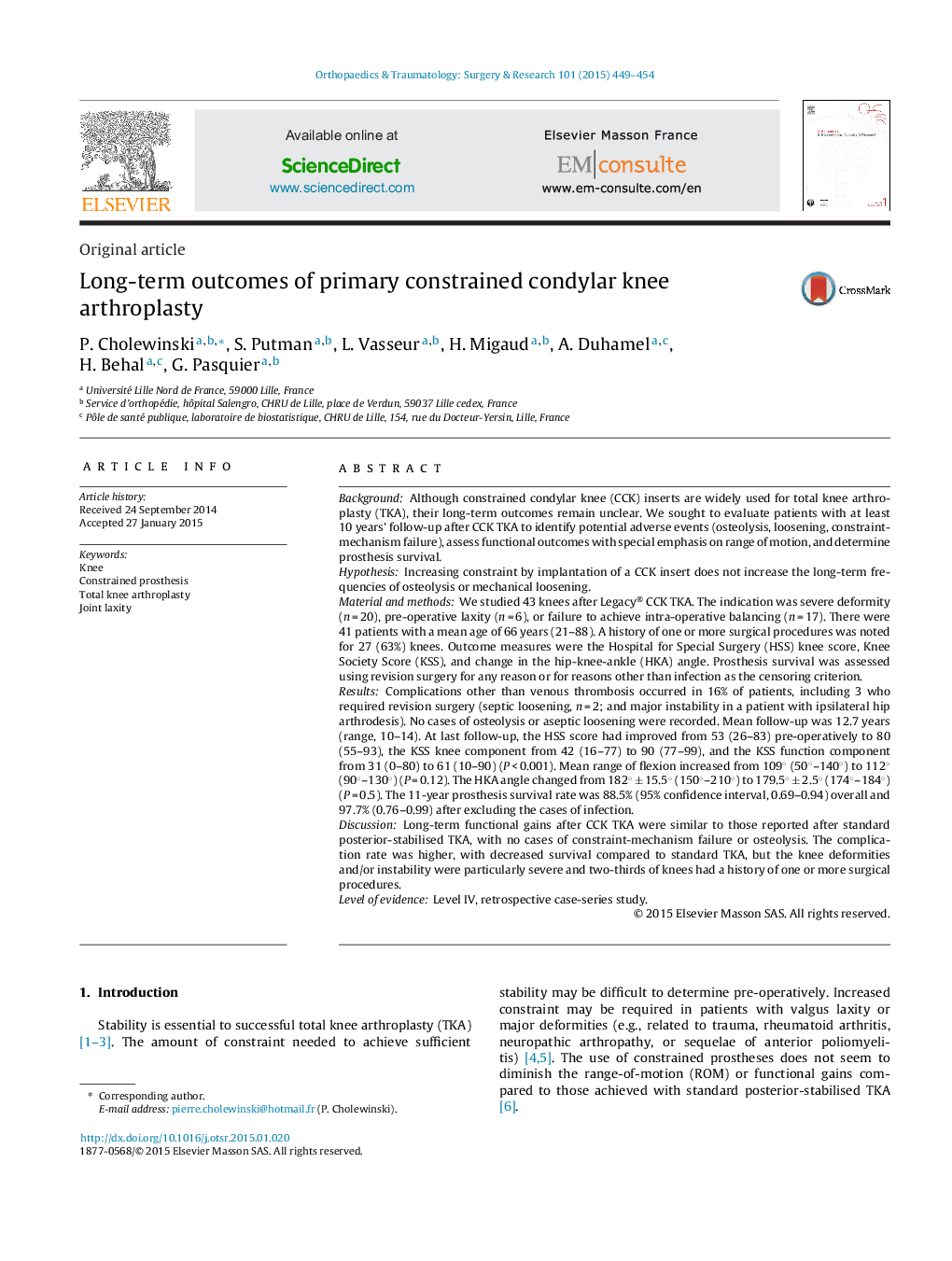| Article ID | Journal | Published Year | Pages | File Type |
|---|---|---|---|---|
| 4081076 | Orthopaedics & Traumatology: Surgery & Research | 2015 | 6 Pages |
BackgroundAlthough constrained condylar knee (CCK) inserts are widely used for total knee arthroplasty (TKA), their long-term outcomes remain unclear. We sought to evaluate patients with at least 10 years’ follow-up after CCK TKA to identify potential adverse events (osteolysis, loosening, constraint-mechanism failure), assess functional outcomes with special emphasis on range of motion, and determine prosthesis survival.HypothesisIncreasing constraint by implantation of a CCK insert does not increase the long-term frequencies of osteolysis or mechanical loosening.Material and methodsWe studied 43 knees after Legacy® CCK TKA. The indication was severe deformity (n = 20), pre-operative laxity (n = 6), or failure to achieve intra-operative balancing (n = 17). There were 41 patients with a mean age of 66 years (21–88). A history of one or more surgical procedures was noted for 27 (63%) knees. Outcome measures were the Hospital for Special Surgery (HSS) knee score, Knee Society Score (KSS), and change in the hip-knee-ankle (HKA) angle. Prosthesis survival was assessed using revision surgery for any reason or for reasons other than infection as the censoring criterion.ResultsComplications other than venous thrombosis occurred in 16% of patients, including 3 who required revision surgery (septic loosening, n = 2; and major instability in a patient with ipsilateral hip arthrodesis). No cases of osteolysis or aseptic loosening were recorded. Mean follow-up was 12.7 years (range, 10–14). At last follow-up, the HSS score had improved from 53 (26–83) pre-operatively to 80 (55–93), the KSS knee component from 42 (16–77) to 90 (77–99), and the KSS function component from 31 (0–80) to 61 (10–90) (P < 0.001). Mean range of flexion increased from 109° (50°–140°) to 112° (90°–130°) (P = 0.12). The HKA angle changed from 182° ± 15.5° (150°–210°) to 179.5° ± 2.5° (174°–184°) (P = 0.5). The 11-year prosthesis survival rate was 88.5% (95% confidence interval, 0.69–0.94) overall and 97.7% (0.76–0.99) after excluding the cases of infection.DiscussionLong-term functional gains after CCK TKA were similar to those reported after standard posterior-stabilised TKA, with no cases of constraint-mechanism failure or osteolysis. The complication rate was higher, with decreased survival compared to standard TKA, but the knee deformities and/or instability were particularly severe and two-thirds of knees had a history of one or more surgical procedures.Level of evidenceLevel IV, retrospective case-series study.
